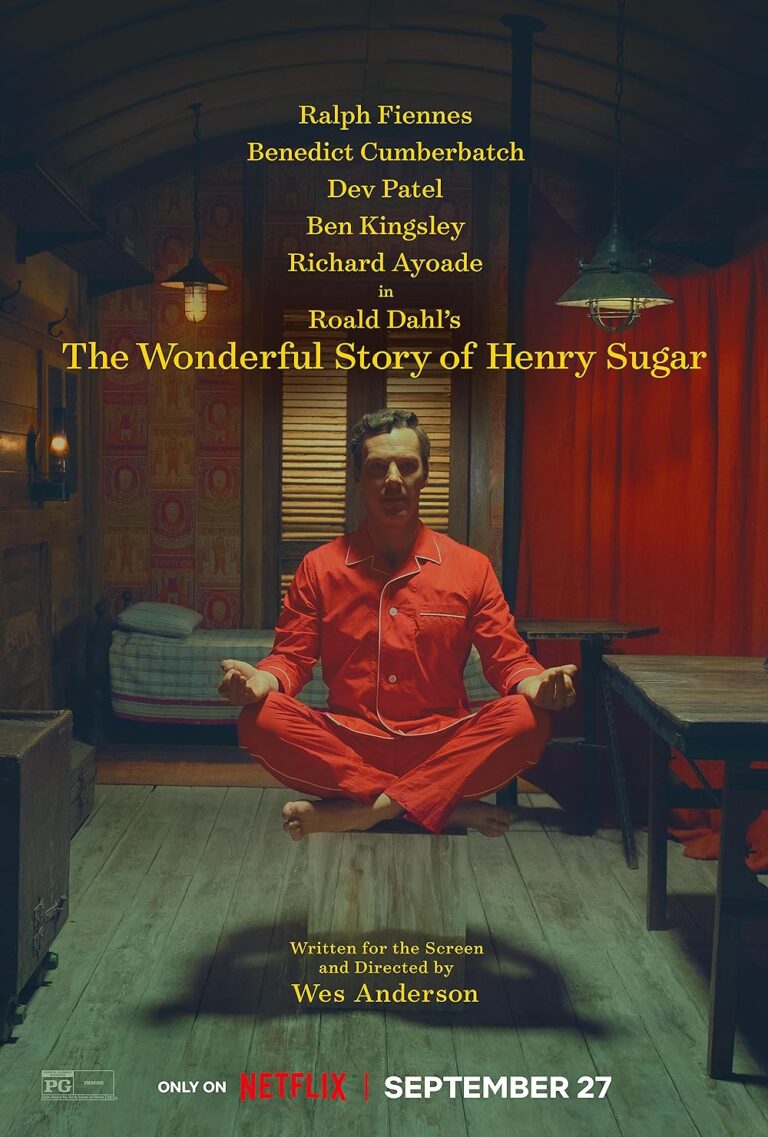
In 1977 Roald Dahl released The Wonderful Story of Henry Sugar in a collection of seven short stories. A few decades later, the tale written by the illustrious children’s novelist is adapted for the silver screen by the master of escapist pastel-hued motion pictures: Wes Anderson. The Texan filmmaker has strongly advocated for the English-author’s work to remain in its original form. He declared that “the books of Roald Dahl should not be bowdlerised,” when it emerged that new editions of his publications had removed or changed references to gender, race and physical appearance to avoid causing offence.
The film The Wonderful Story Of Henry Sugar, was presented at the 80th Venice Film Festival and is currently available on Netflix. This is the second Dahl book that Anderson has brought to the screen, following his hugely successful 2009 stop-motion animated movie Fantastic Mr. Fox. Furthermore, Anderson has brought three more short-film Dahl adaptations to Netflix: The Swan, The Rat Catcher, and Poison.

The medium-length movie (39 minutes) rigorously traces the plot presented by Roald Dahl. The titular character is a wealthy man, who embraces an extraordinary challenge once he comes across a tale concerning Imad Khan, i.e. ‘The Man Who Sees Without His Eyes’. This Indian Yogi, in 1935 had the ability to see even after doctors sealed his eyes. Henry Sugar in 1959, after three years of training manages to accomplish the same skills and take advantage of them to cheat at gambling games, until he realises he can put the money to better use.
The cast gathers some of Wes Anderson’s habitual actors (Ralph Fiennes, Benedict Cumberbatch, Dev Patel, Ben Kingsley, Richard Ayoade, Rupert Friend), who play multiple roles as if they were in a theatrical performance that is captured by the camera. The feeling of watching a stage show is enhanced by the way the hand-painted sets — that homage Henri Rousseau — transform before our very eyes. This approach echoes Anderson’s latest film Asteroid City that revelled in metafiction showing us the making of a film and a play like François Truffaut did in his Day For Night and The Last Metro.

Wes Anderson’s playful approach is a match made in heaven with the tone of Roald Dahl’s storytelling and allows the film director to break the fourth wall to reinforce the conversation with the audience. The visual journey begins in Roald Dahl’s hut within his Gipsy House in Great Missenden in Buckinghamshire; it then expands to Calcutta hospitals and London casinos. The lines of dialogue that are delivered with haste and rhythm — both when they are in a form of monologue and when they are exchanged between characters — set the pace and mood. The cinematic oeuvre emerges as a no fuss moral tale that could be equated to The Fables of Aesop.
At the end of the day this concentrated version of the Anderson universe comes across in a liberating and inspirational way, far from being tedious in its stylistic construction or the themes it conveys. Besides bequeathing to viewers the old adage that ‘with great power comes great responsibility’, it gives an intriguing insight into the powers of perception. As one character reminds us: “The mind is a scattered thing and it concerns itself with thousands of different titans at once…”
Final Grade: B+

